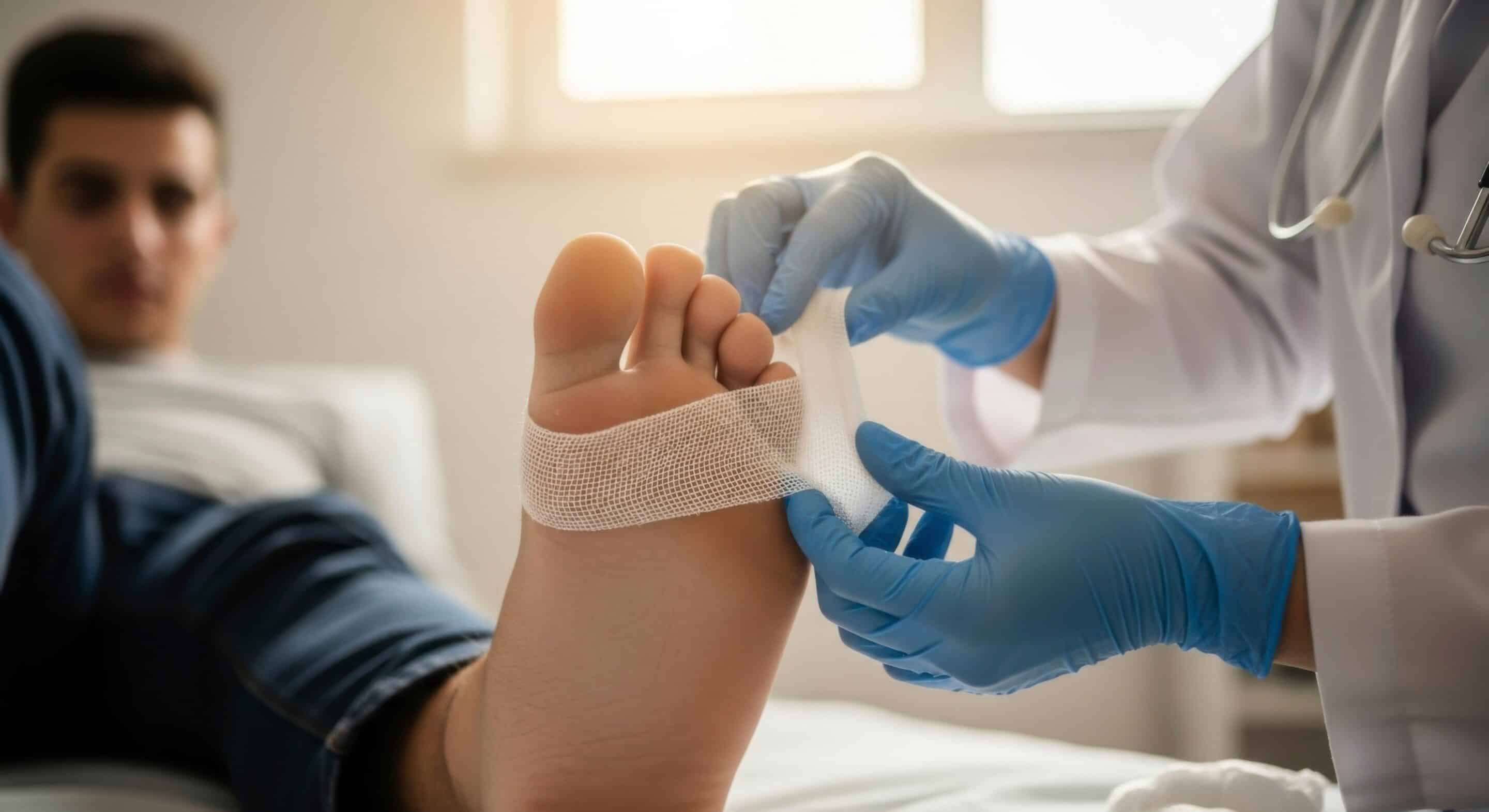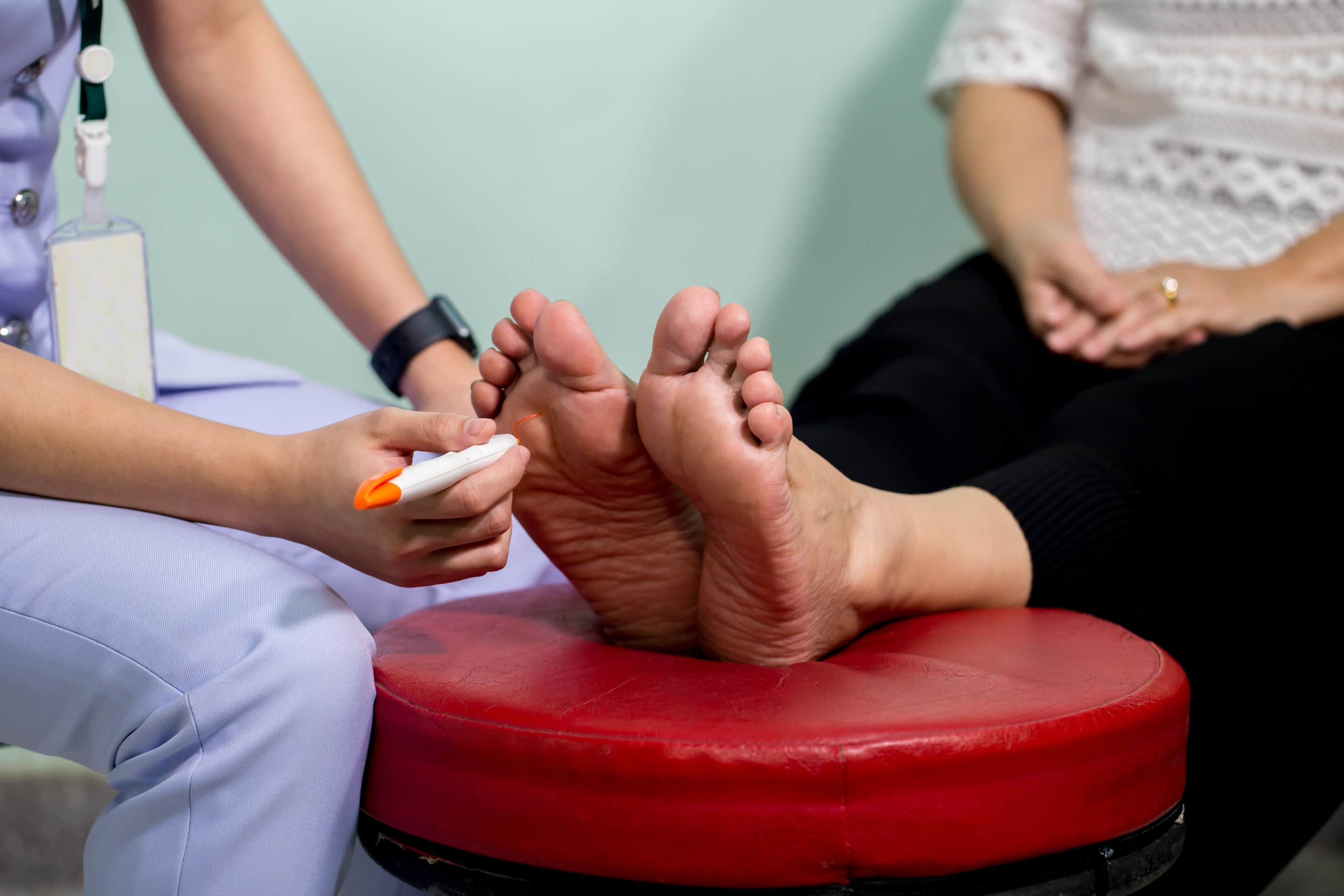Comprehensive Wound Care Means More than Cleaning and Dressing
For those managing diabetes, caring for your feet goes beyond daily upkeep—it plays a critical role in protecting your overall health. Even a small sore or blister can quickly turn into a serious diabetic foot wound if ignored. Because diabetes often limits circulation and affects nerve function, injuries may be harder to detect and slower to heal. That’s why early intervention and preventive strategies are key to maintaining strong, healthy feet and avoiding complications.
The Importance of Prompt Diabetic Wound Treatment
Why Diabetic Foot Wounds Require Urgent Care
Unlike ordinary injuries, diabetic foot wounds require urgent attention. Limited blood flow and nerve damage make them more prone to infection and delayed healing, which can lead to serious complications.
The Risk of Infection, Slow Healing, and Amputation
When wounds don’t heal properly, bacteria can spread quickly, raising the risk of severe infection. In some cases, untreated ulcers may progress to tissue damage that requires surgery or even amputation.
How Early Intervention Improves Outcomes
Seeking treatment at the first sign of a wound improves healing outcomes, lowers infection risks, and helps prevent long-term damage to your feet.
Our Approach to Diabetic Wound Care
Advanced Wound Treatment Options
At Texas Foot & Ankle Center, we treat many diabetic wounds directly in-office with effective care techniques, including cleaning, debridement, and specialized dressings. For more complex wounds, we collaborate with a nearby advanced wound care clinic, giving patients access to cutting-edge technology, without needing a hospital stay.
Ongoing Wound Monitoring & Recovery
Healing takes longer in patients with diabetes because reduced circulation from Peripheral Artery Disease (PAD) deprives cells of the oxygen and nutrients needed for repair. That’s why continued monitoring is critical.
- Off-loading pressure with walking boots, crutches, or other devices supports healing.
- Follow-up appointments ensure your wound is progressing and allow us to make adjustments if needed.
- Advanced wound therapies are available for ulcers that respond slowly to conventional treatments.
Preventing Future Diabetic Foot Wounds
Identifying Risk Factors
Prevention is just as important as treatment. We carefully evaluate each patient to identify potential risk factors, such as:
- Abnormal foot structures that create excess pressure and increase ulcer risk
- Shoes that don’t fit properly, causing friction or skin irritation
- Skipping daily foot checks, which may delay the discovery of injuries
Proactive Prevention Strategies
We provide customized solutions to help you protect your feet and lower the chances of new wounds, including:
- Custom orthotics that evenly distribute weight and relieve pressure points
- Specialized diabetic shoes and seamless socks designed to prevent friction, blisters, and skin breakdown
- Regular podiatry visits for early detection of issues before they turn into serious concerns
Make Foot Care a Key Part of Your Diabetes Management
Managing diabetes successfully means protecting every part of your health—including your feet. A podiatrist plays an essential role in monitoring wounds, preventing ulcers, and keeping you active. Working alongside your primary doctor and other specialists ensures you receive comprehensive care.
When living with diabetes, making foot protection a priority is one of the most effective steps you can take for long-term health, comfort, and mobility.
Call to Action – Expert Diabetic Wound Care in Dallas
At Texas Foot & Ankle Center, we provide advanced diabetic wound treatment and proactive prevention strategies tailored to your needs. Don’t wait until a wound becomes a serious problem—schedule an appointment today. Let our professional team help you keep your feet healthy for years to come.




